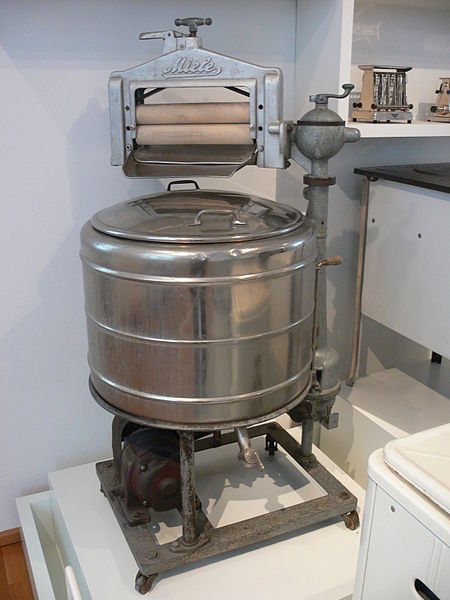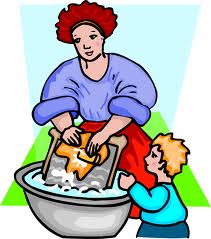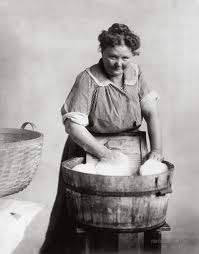- Front loading washers use about 70% less water than the traditional top loader, but that doesn’t mean everyone has to run out and buy a new washer to save energy.
- Washing clothes in cold water will save the energy needed to heat the water
- Try to do only full loads. The washer consumes the same amount of energy for all load sizes, so fill it up.
- Use the high spin cycle to extract as much water as possible before putting in the dryer
- A good maintenance tip is to clean the washer by running an empty load with vinegar or bleach. This will remove mold and mildew inside the drum that may be causing an odor .
- Leave the lid up (or door open on front loaders) to allow the machine to completely dry out to avoid mold and mildew growth
NOTE: We don't necessarily have a choice in what kind of energy we have at our disposal. Here are a few choices if you live in a place that allows them:
When I typed the words "types of energy" into a search engine - it seemed very familiar:
We had published these pages on 'types of energy"
-
METHODS OF HEALING - THE DREAM AND THE REALITY
www.greatdreams.com/healing-methods.htm
When we come to work as a group with individuals whom we shall seek to aid, we shall then learn to use the various types of energy according to the need of the ... -
80 Shining Stranger - Dreams of the Great Earth Changes
www.greatdreams.com/grace/50/80harold.html
"If opposite types of energy (3 / 2 x 2 / 3) are related to "1' whole, it must begin by relating them to the least neutral particle (the neutrino: an indestructible union ...
-
STRING OF PEARLS COMETS
www.greatdreams.com/lostland/string-pearls.htm ... difference between types of energy, forms and even dimensions. The understanding of wave dynamics is a key that opens the door to many of the great truths.
-
METAPHYSICAL AND HEALING PROPERTIES
www.greatdreams.com/metaphysical_properties.html
It is a very powerful stone for all types of energy work because of this. It can remove an energy block from a person, a particular chakra, an environment, or a ...
-
OIL PIPELINES TO EXPAND
Jul 18, 2001... Partnership to the entire U.S.A. and expanding the business scope to all suitable types of energy transportation assets, including terminals, ...
-
NOTE: Our government allows a lot of different methods of getting energy to our homes, except one.
FREE ENERGY:
-
Scalar Physics - Alternative Energy - Free Energy - Plasma ...
www.greatdreams.com/scalar.htm
Moray, T. Henry: The Radiant Energy Device T. H. Moray built a device capable of producing 50,000 watts of energy, if rebuilt, will be capable of answering the ...
-
Dr. Eugene Mallove - Cold Fusion Expert
www.greatdreams.com/mallove.htm
is there anyone who has seriously looked at the free energy over unity field that is not totally ... Free Energy Here and Now and Then: Velocity Power Sources. -
New Bible Codes Discovered
Back in the Early 1900's an inventor named Nikola Tesla developed Free-Energy methods which could supply all the world with FREE Electricity. One of these ...
-
UFO PROPULSION SYSTEMS
www.greatdreams.com/ufos/propulsion.htm
Due to an overload of producing free energy in the 12-mile long Tether, it shorted out and broke away from the space shuttle. According to an official NASA ...
-
COMMANDER HATONN - THE PHOENIX LIBERATOR
www.greatdreams.com/ufos/hatonn.htm
Do you actually think the Elite money-mongers would allow such a thing as freeenergy and/or allow healing methods utilizing free energy and magnetic ...
-
John Worrell Keely
www.greatdreams.com/grace/1/26keely.html
... Davidsons book contains 17 Bibliographic References. Davidson, Dan A., A Breakthrough in New Free Energy Sources, R & E Research Assoc., 1977, QC73.
-
Electrons and Mythologies - Dreams of the Great Earth Changes
www.greatdreams.com/grace/99/99MMMelectrons.html
surrounding the UFO Free Energy Enigma. It is and shall be my attempt to bring about change in this arena where perhaps the pen is mightier then the sword by ...
-
HAARP VS THE SUN
www.greatdreams.com/haarp-sun.htm
A far better game would be to spur us all onto the discovery of a clean "FreeEnergy Source" - to replace oil, coal, and uranium fuel systems. But meanwhile back ...
-
SPIRITLINK BOOKMARKS
www.greatdreams.com/spiritbk.htm
The Millennium Frontier - future science, future technologies, free energy, space flight, ... The Quest for Free Energy - Paranormal Phenomena/The Unexplained ...
-
-
HAARP DATABASE
www.greatdreams.com/haarp_database.htm
together and sharing our ideas and plans for solar power (and FREE ENERGY) and for world peace, and put a double ... www.greatdreams.com/haarp-sun.htm - ...
-
Geodetic Precession and Frame Dragging
www.greatdreams.com/grace/126/145gravframe.html
Apr 20, 2004... H.A.Nieper's "gravity field energy" [21],T.T.Brown's "electrogravitation" [22], "fifth force" [23], "antigravitation" [24], "free energy". This list can be ...
-
FREQUENCIES OF THE ORGANS OF THE BODY AND PLANETS
Scalar Physics - Alternative Energy - Free Energy - Plasma Energy... ... (Please keep in mind that it has long been known that selected EMF pulse rates, ...
-
the code of carl munck, and ancient gematrian numbers - part ...
... page 18 of vol 8 no 3 in the recent blockbuster issue of Electrifying Times. This special issue bares all about revolutionary suppressed free energy technology.
-
THE THEORY AND PRACTICE OF ALCHEMY - INCLUDING ORMUS
www.greatdreams.com/alchemy.htm
The subject of my talk was that "FREE Energy Device Technologies ARE NOT IN FACT FREE." My essential point was that. All non-linear or "free" or "scalar" or ...
-
NEW WORLD ORDER CONSPIRACIES
www.greatdreams.com/cnsprcy.htm
gravitation, Space-Time, free energy devices and quantum changes; local curvature of Space-Time. 1908. Anti-matter device explodes over Tunguska, Siberia.
-
SURVIVAL AND SELF-SUFFICIENCY LINKS
www.greatdreams.com/survival.htm
Mar 11, 2013 ... RESIDENTIAL WOOD HEATING · RICK TODISH'S FREE-ENERGY PAGE · ROCKY MOUNTAIN SURVIVAL GROUP - EXCELLENT SOURCES ...
-
Contacts: Einstein was Precisely Backward, Deliberately
www.greatdreams.com/grace/159/168contacts.html
Jan 7, 2005 ... John Collins Free-Energy Research PO Box 2001, Leamington
-
THE MAYAN CALENDAR and THE UNIVERSAL TIME CYCLE
www.greatdreams.com/mayan/mayan-calendar.htm
1873 - 1893 - is when Nicola Tesla discovered free energy , but 'power' squashed him, but its coming back again. In 2008 - free is energy is returning ...
-
THE TUNING AND OUR PART IN IT
www.greatdreams.com/tuning.htm
Possible exceptions could be technology based on so called "Zero Point" or freeenergy. 8. Our physical body is changing as we approach Zero Point. Our DNA ...
-
Dee Finney's blog - August 12, 2011 - page 23
www.greatdreams.com/blog/dee-blog23.html
Aug 12, 2011 ... HAARP, WEATHER, WAR, AND EMF MIND CONTROL · HAARP · SCALAR PHYSICS - ALTERNATIVE ENERGY - FREE ENERGY - PLASMA ...
-
the hierarchy of secret socieite
www.greatdreams.com/political/hierarchy-of-secret-societies.html
... plenty of money into the Environmental Movement to counter the nuclear- power industry, which wanted to build up its own free energy through nuclear power.
-
DNA - PAST AND FUTURE
www.greatdreams.com/dna_past_future.htm
[Taylor] And also, the entities that want us to do the homework of unlocking the code, what do they want it for? reconnection with the all-that-is? free energy only ?
-
INFINITY CHANNEL - ON UFOS AND PYRAMIDS
www.greatdreams.com/ufos/infinity-channel.htm
It has become fashionable to think that they do have access to the kind of secrets that we have been talking about - free energy as we call it. Is this so? Do the ...
-
CREATING COMMUNITY
www.greatdreams.com/commune.htm
... of remarkable strength, economy, and beauty, brought to life by an elegant concept of design and the discovery of a new source of pollution-free energy.
-
Dee Finney's blog January 19, 2013 - page 428 - Project ...
www.greatdreams.com/blog-2013/dee-blog428.html
Jan 19, 2013 ... SCALAR PHYSICS - ALTERNATIVE ENERGY - FREE ENERGY ... www. greatdreams.com/scalar.htm .
-
CHINA AT WAR WITH AMERICA
www.greatdreams.com/china/china-attacking-america.htm
Multiple US government sources tell me these technologies include free energy, warp-speed space travel, star-gate portals and more. As long as humanity ends ...
-
ARE OUR CHILDREN WIRED INCORRECTLY?
SCALAR PHYSICS - ALTERNATIVE ENERGY - FREE ENERGY - PLASMA ENERGY AND HEALING · THE THREE PHASES OF THE SUN (SON) ...
-
MAGNETOSPHERE
www.greatdreams.com/magnetosphere_database.htm
SCALAR PHYSICS - ALTERNATIVE ENERGY - FREE ENERGY - PLASMA ENERGY ... ... 686605, "Method and Apparatus for Altering a Region in the Earth's ...
-
THE CSETI PROJECT STARLIGHT DISCLOSURE STRATEGY
And the means for generating immense amounts of pollution-free energy is hidden away in black projects, while the earth's geophysical equilibrium is ...
-
Andy Pero, Montauk 'Superman' Programming Victim (June 13, 2000)
www.greatdreams.com/Montauk_Superman_Programming.htm
Jun 13, 2000 ... The information is sent to a network of free energy crystals arranged in a circle. Then whatever thoughts were amplified, i.e., a time period, ...
-
DARPA - PROJECT PEGASUS
www.greatdreams.com/darpa-pegasus.htm
We also talk about the Brookings report, origins of life on Earth, oil based economy. ecology, pollution free transportation and "free energy".
-
Dee Finney's blog January 25, 2013 page 431 THE ASHEN LIGHT ...
www.greatdreams.com/blog-2013/dee-blog431.html
Jan 25, 2013 ... Carbon-free energy. Carbon capture and storage · Efficient energy use · Low- carbon economy · Nuclear power · Renewable energy. Personal ...
-
POLAR MOTION - A PROPHECY - THE SCIENCE
www.greatdreams.com/motion.htm
Mar 6, 2001 ... "These magnetic fields are the dominant free energy of the universe," says astrophysicist Stirling A. Colgate of Los Alamos National Laboratory.
-
AUSTRALIA DATABASE
www.greatdreams.com/australia_database.htm
Australia products/Books/Videos & Membership on; Natural Medecine/Issues, Free Energy Technology, The Transformation, Conspiracies + more..." .
-
THE CURE FOR CANCER - WE SHOULD ALL KNOW THIS
www.greatdreams.com/cancer-cure.htm
Jun 22, 2005 ... http://www.greatdreams.com/mind.htm . SCALAR PHYSICS - ALTERNATIVE ENERGY - FREE ENERGY - PLASMA ENERGY ... ... (from a ...
-
KIARA WINDRIDER - YEAR OF TRUTH - A GLOBAL CALL
www.greatdreams.com/kiara5.htm
Sep 10, 2003 ... Who was behind 9-11? What were the reasons for the invasion of Afghanistan and Iraq? Why the global dependence on oil when 'free energy' ...
-
Dee Finney's blog December 19, 2012 page 404 MASS MURDERS ...
www.greatdreams.com/blog-2012-3/dee-blog404.html
Dec 19, 2012 ... See Suggestions for How to Get Involved with the Roll-out of Exotic Free Energy; Pass this on to your friends and favorite news sources. ...
-
ARE YOU GIVING UP YOUR FREEDOMS FOR SECURITY?
www.greatdreams.com/security.htm
Apr 10, 2000 ... TESLA COILS- How they work, with excellent photos. TESLA'S Free Energy Receiver-patented in 1901 as An Apparatus for the Utilization of ...
-
THE NEW WORLD ORDER - A GOOD THING?
www.greatdreams.com/nwo_good.htm
Sep 25, 2001 ... This energy is known by several different names - Zero Point Energy (ZPE), Enhanced Energy, Space Energy, New Energy; Free Energy, Super ...
-
The Giza Communications / Synchronizing Device
www.greatdreams.com/grace/100/124cheopspan.html
Mar 24, 2002 ... Many "free energy" devices are in fact tapping such a vibrational resonance ( Newton"s Third Law is not impinged upon). The Earth has a ...
-
IS EARTH GOING TO BE EVACUATED?
www.greatdreams.com/dresden/earth-evacuation.html
Oct 9, 2010 ... Use of nanotechnology, materialization chambers and free energy will mean abundance and well being for everybody. The Pleiadians will ...
-
THE NEW WORLD ORDER -WHAT IS IT?
THE PROBLEM OF FREE ENERGY · THE NEW WORLD ODOR · SHADOW GOVERNMENT OF THE UNITED STATES AND THE DECLINE OF AMERICA ...
-
frequency sickness - Dreams of the Great Earth Changes
www.greatdreams.com/antenna.htm
SCALAR PHYSICS - ALTERNATIVE ENERGY - FREE ENERGY - PLASMA ENERGY AND HEALING. A zip file of the complete site as it was when it closed is ...
-
Dee Finney's blog April 24, 2012 page 205 THE SUN AND PLANET X
www.greatdreams.com/blog-2012/dee-blog205.html
Feb 23, 2012 ... SCALAR PHYSICS - ALTERNATIVE ENERGY - FREE ENERGY ... www. greatdreams.com/scalar.htm
-
BUILDING THE BODY
www.greatdreams.com/building_the_body.htm
SCALAR PHYSICS - ALTERNATIVE ENERGY - FREE ENERGY - PLASMA ENERGY ... ... and a host of other body and immune system abnormalities/ paradoxes ...
-
Electrons and Mythologies - Dreams of the Great Earth Changes
www.greatdreams.com/grace/99/99WWWelectrons.html
These observations may lead to free energy systems. These observations and conventional theory of energy amplitude amplification at mechanical resonance ...
-
WORLD PEACE
www.greatdreams.com/world_peace_database.htm
We must exert our influence by gathering together and sharing our ideas and plans for solar power (and FREE ENERGY) and for world peace, and put a double ...
-
PERSONAL AND SPECIAL UFO REPORTS
www.greatdreams.com/uforprts.htm
Philadelphia Experiment - the helectites of hyperspace · Paranormal - Mining Company -the anomalies of the ancients · the fareway of free energy · the abyss of ...
-
Dee Finney's blog May 27, 2012 page 226 Wayne Aho - HOW TO ...
www.greatdreams.com/blog-2012-2/dee-blog226.html
May 27, 2012 ... In 1958 Aho became associated with Otis T. Carr, a man involved in selling shares in a free energy company. Aho believed that Carr could ...
-
A Career In Microbiology Can Be Harmful To Your Health
www.greatdreams.com/microbiologists.htm
... years in the field of new energy research. Dr. Mallove was convinced it was only a matter of months before the world would actually see a free energy device.
-
DEE FINNEY's blog March 12, 2012 page 167 EINSTEIN - GATES ...
www.greatdreams.com/blog-2012/dee-blog167.html
Mar 12, 2012 ... Ordinarily the density fluctuations are controlled by the second derivative of the free energy with respect to the density. At the critical point, this ...
-
SPIRIT MESSAGE FROM SANANDA
www.greatdreams.com/spirit_message4.htm
Mar 13, 2002 ... Free energy as they call it. This knowledge comes from God and is good. The greedy people have to leave the earth and they shall. We shall ...
-
WINIFRED BARTON
www.greatdreams.com/winifred-barton.htm
May 4, 2007... explains that ET's are our friends and they bring SOLUTIONS to our ailing system, including clean free energy, and an end to social chaos.
-
the magnetic field - a crop circle under scrutiny for meaning
www.greatdreams.com/biomag.htm
Jul 22, 2000 ... "These magnetic fields are the dominant free energy of the universe," says astrophysicist Stirling A. Colgate of Los Alamos National Laboratory.
-
Sylvester the Cat and Speedy Gonzales - May 5, 2003
www.greatdreams.com/sylvester.htm
May 5, 2003... the underground facilities and face -----not a planet of destruction, but----a world of dilemma: When to release information about "free energy", ...
-
NIBIRU
www.greatdreams.com/nibiru_database.htm
SCALAR PHYSICS - ALTERNATIVE ENERGY - FREE ENERGY - PLASMA ENERGY ... Dark Star Theory - A new theory linking a possible brown dwarf orbiting ...
-
Dee Finney's blog November 7, 2012 page 367 Barrie Trower: THE ...
www.greatdreams.com/blog-2012-3/dee-blog367.html
Nov 7, 2012 ... SCALAR PHYSICS - ALTERNATIVE ENERGY - FREE ENERGY ...
www. greatdreams.com/scalar.htm It was theorized that the ...
-
Dee Finney's blog February 7, 2012 page 130 WHAT'S UP WITH ...
www.greatdreams.com/blog-2012/dee-blog130.html
Feb 7, 2012 ... Yes, there are devices that create almost free energy, and there really is a way to run a car on water. I have no doubt that UFOs are built and ...
-
Dee Finney's blog October 28, 2012 page 355 REMOTE VIEWING ...
www.greatdreams.com/blog-2012-3/dee-blog355.html
Oct 28, 2012 ... SCALAR PHYSICS - ALTERNATIVE ENERGY - FREE ENERGY ... www. greatdreams.com/scalar.htm.
-
DREAM GATES - THE IMPORTANCE OF DREAMS
www.greatdreams.com/dream-gates.htm
Sep 28, 2002 ... Be they health, defense or free energy, are found in the construction of a Magtet or elsewhere in the PAL Oil System. The rest is up to you.
-
THE RIP IN TIME/SPACE CONTINUUM
www.greatdreams.com/war/space_time_continuum.htm
A far better game would be to spur us all onto the discovery of a clean "FreeEnergy Source" - to replace oil, coal, and uranium fuel systems. But meanwhile back ...
-
SHUTTLE DATABASE
www.greatdreams.com/shuttle_database.htm
SCALAR PHYSICS - ALTERNATIVE ENERGY - FREE ENERGY - PLASMA ENERGY ... Retired Air Force Colonel Donald Ware has claimed that a three star ...
-
PYRAMID
www.greatdreams.com/pyramid_database.htm
THE PYRAMID AT GIZA AND THE MAGNETIC NULL ZONE · SCALAR PHYSICS - ALTERNATIVE ENERGY - FREE ENERGY - PLASMA ENERGY AND ...
-
NEW WORLD ORDER
www.greatdreams.com/new_world_order_controls.htm
Dec 12, 2004 ... SCALAR PHYSICS - ALTERNATIVE ENERGY - FREE ENERGY - PLASMA ENERGY ... ... Kabbalah. The Millennium frontier - Frontier science ...
-
Dee Finney's blog April 7, 2012 page 190 CARBON FOOTPRINT
www.greatdreams.com/blog-2012/dee-blog190.html
Apr 7, 2012 ... Carbon-free energy. Carbon capture and storage · Efficient energy use · Low- carbon economy · Nuclear power · Renewable energy. ...
-
Easter Island - The Connection to Extraterrestrials
www.greatdreams.com/ufos/long-ears.htm
SCALAR PHYSICS - ALTERNATIVE ENERGY - FREE ENERGY - PLASMA ENERGY ... ... The Anomalist - Print and web journal exploring the mysteries of ...
-
The American Tragedy: A Symbolic Event, Part Three
www.greatdreams.com/Events/9_11_01/Amertrg3.htm
Sep 11, 2001 ... Slim Spurling's "harmonizers", the super-ionic water developed in Turkey, and various "free energy" devices springing up around the world to ...
-
DRUG INFORMATION DATABASE
www.greatdreams.com/drug_database.htm
SCALAR PHYSICS - ALTERNATIVE ENERGY - FREE ENERGY - PLASMA ENERGY ... He spent over 5 million dollars exploring uses of the drug dilantin .
-
MARS LINKS - DATABASE OF MARS INFORMATION
www.greatdreams.com/mars/mars-links.htm
Aug 18, 2003 ... SCALAR PHYSICS - ALTERNATIVE ENERGY - FREE ENERGY - PLASMA ENERGY ... ... Alternative Answers - Mars, Moon, and space ...
-
NEW WORLD ORDER
www.greatdreams.com/new_world_order_database.htm
THE NEW WORLD ORDER - A GOOD THING? Perhaps a New ...
-
Dee Finney's blog - January 22, 2013 page 429 ENGLISH HERB ...
www.greatdreams.com/blog-2013/dee-blog429.html
Jan 22, 2013 ... SCALAR PHYSICS - ALTERNATIVE ENERGY - FREE ENERGY ... www. greatdreams.com/scalar.htm.
-
DNA DATABASE
www.greatdreams.com/dna_database.htm
www.greatdreams.com/survival_database.htm . SCALAR PHYSICS - ALTERNATIVE ENERGY - FREE ENERGY - PLASMA ENERGY ... Is Native DNA A Helix?
-
AL GORE GOES TO THE UN
www.greatdreams.com/climate/gore_u_n.htm
Jul 17, 2008... for many of the tasks the Climate Report puts before governments in the interest of reaching an emissions free energy economy and society.
-
Dee Finney;s blog - December 24, 2011 - page 95 TIME IS AN ...
www.greatdreams.com/blog/dee-blog95.html
Dec 24, 2011 ... Eventually someone will apply them to the transmutation of the elements and the production of free energy. Remember, light is all there is.
-
COLUMBIA SHUTTLE NEWS - 2003
www.greatdreams.com/shuttle-news.htm
Jun 1, 2004 ... Tether as it Breaks away from the Space Shuttle Due to an overload of producing free energy in the 12-mile long Tether, it shorted out and ...
-
The Mental Destruction of Paul Bennewitz
www.greatdreams.com/Falcon-Richard-Doty.htm
Feb 26, 2005... TX who specializes in Zero-Point Energy, a quantum/resonance physics phenomenon with reported potential for above- unity ( free ) energy; ...
-
Dee Finney's blog February 1, 2012 page 122 WHERE ARE THE ...
www.greatdreams.com/blog-2012/dee-blog122.html
Feb 1, 2012... may have developed even more advanced Nazi technology, including anti- gravity devices, a potential source of vast amounts of free energy.
-
Electrons and Mythologies - Dreams of the Great Earth Changes
www.greatdreams.com/grace/99/99SSelectrons.html
The "unified matrix"_is *involved*_in the fundamental understanding of so-called "anti-gravity" propulsion and "free-energy" availability .. tapping into the ...
-
IRAN
www.greatdreams.com/iran_database.htm
Nov 27, 2005 ... SCALAR PHYSICS - ALTERNATIVE ENERGY - FREE ENERGY - PLASMA ENERGY ... "On June 17, 1966 from the air near Teheran, Iran, ...
-
Dee Finney's blog January 1, 2013 page 415 GOVERNMENT ...
www.greatdreams.com/blog-2013/dee-blog415.html
Jan 1, 2013 ... SCALAR PHYSICS - ALTERNATIVE ENERGY - FREE ENERGY ... www. greatdreams.com/scalar.htm. Subduction is false. Chemtrails or ...
-
Dee Finney's blog - November 29, 2011 - page 70 - PLANETARY ...
www.greatdreams.com/blog/dee-blog70.html
Nov 29, 2011 ... "These magnetic fields are the dominant free energy of the universe," says astrophysicist Stirling A. Colgate of Los Alamos National Laboratory.
-
POLAR AXIS SPIN - The Current Location Of The Spin Axis
www.greatdreams.com/spinaxis.htm
Jun 9, 2005 ... Eventually someone will apply them to the transmutation of the elements and the production of free energy. Remember, light is all there is.
-
Dee Finney's blog December 14, 2012 page 398 HISTORY ...
www.greatdreams.com/blog-2012-3/dee-blog398.html
Conspiracy · News:Conspiracy · Directory:Free Energy as an Antidote to Conspiracy · Directory:Antidotes to the Conspiracy to Enslave Humanity · Directory:9/11 ...
-
GREATDREAMS 9/11 DATABASE
www.greatdreams.com/911_database.htm
Who was behind 9-11? What were the reasons for the invasion of Afghanistan and Iraq? Why the global dependence on oil when 'free energy' alternatives exist ...
-
OTHER EARTHS?
www.greatdreams.com/constellations/other-earths.htm
SCALAR PHYSICS - ALTERNATIVE ENERGY - FREE ENERGY - PLASMA ENERGY ... ... who dare. Sphinx Stargate - Paul LeViolette has found a cataclysmic ...
-
Constellation Eridanus -Is it connected to Eridu - the first ...
www.greatdreams.com/eridanus.htm
NOVUS ORDO DRACONIS. NUCLEAR SUBTERRENES. ... SCALAR PHYSICS - ALTERNATIVE ENERGY - FREE ENERGY - PLASMA ENERGY ... ... Dark Star ...
-
MIRACLES - THE FINGER-POSTS OF GOD
www.greatdreams.com/miracle.htm
Feb 21, 2003 ... SCALAR PHYSICS - ALTERNATIVE ENERGY - FREE ENERGY - PLASMA ENERGY ... ... Body Systems Technology (Herb's). Wierd and exotic ...
-
FLOOD DATABASE
www.greatdreams.com/flood_database.htm
THE FLOOD - AN END TIME PROPHECY The Flood did not ...
-
THE RIDDLE OF THE STARS
www.greatdreams.com/riddle-stars.htm
Jul 26, 2003 ... www.greatdreams.com/eridanus.htm . SCALAR PHYSICS - ALTERNATIVE ENERGY - FREE ENERGY - PLASMA ENERGY ... ... who dare.
NOTE: THE LATEST INFORMATION FROM STEVEN GREER IS ABOUT A NEW MOVIE COMING OUT ABOUT ALIENS:
HE REALLY DOESN'T CARE ABOUT ALIENS ANYMORE - ITS ABOUT GETTING FREE ENERGY TO THE PEOPLE.
WHY NOT? BIG OIL - THAT'S WHAT THE GOVERNMENT WANTS - THATS WHERE THEIR MONEY IS:
READ THESE AND WEEP: " I DOUBT WE'LL HAVE FREE ENERGY IN 'MY' LIFETIME!"
-
The Orion Project - Welcome to The Orion Project!
"Few men are willing to brave the disapproval of their fellows, the censure of their colleagues, the wrath of their society. Moral courage is a rarer commodity than ...
-
Directory:Steven M. Greer - PESWiki
peswiki.com/index.php/Directory:Steven_M._Greer
Dr. Steven M. Greer has been a world leader for years in the fields of extraterrestrial disclosure and the quest for plausible free energy technologies.
-
Dr. Steven Greer and Dr. Ted Loder on Free Energy Technology ...
goldenageofgaia.com/disclosure/how-will-the-galactics-help-us/dr-steven-gre...
Dr. Steven Greer: Welcome to Conversations with Dr. Steven Greer and this is Dr. Greer and I'm joined today with Doctor Ted Loder, science advisor for the ...
-
Dr. Steven Greer presents "The Promise of New Energy" at the ...
www.youtube.com/watch?v=0FEyV_-NGyk
Aug 12, 2009 ... Dr. Steven Greer presents "The Promise of New Energy" at the European Exopolitics Summit 2009.
-
BREAKING*** Dr. Steven Greer Threatens Free-Energy Inventors ...
www.godlikeproductions.com/forum1/message848890/pg1
At the close of the Barcelona Exopolitics Summit, there was a near riot in the auditorium when several dozen Spanish delegates tried to take ...
-
The Disclosure Project
Dr. Steven Greer has teamed up with Emmy Award winning filmmaker ... explain the connection to Free Energy and provide the vision of Contact with ET ...
-
CheckTheEvidence.com - Something in The Aero?
www.checktheevidence.co.uk/cms/index.php?option=com_content&tas
In this article, I will be trying to examine Dr. Steven Greer's Free Energy Initiatives and question why they do not seem to have yielded anything of practical value.
-
Steven M. Greer - Wikipedia, the free encyclopedia
en.wikipedia.org/wiki/Steven_M._Greer
Steven Macon Greer (June 28, 1955) is an American medical doctor and ufologist who founded the Center for the Study of Extraterrestrial Intelligence ( CSETI) ...
-
Space Energy Access Systems (SEAS Power); Dr. Steven Greer and ...
freeenergynews.com/Directory/Greer/
Feb 9, 2003 ... Dr. Steven Greer and Free Energy Technology. A very talented team of individuals intent on introducing free energy technology to the ...
-
Steven Greer & David Wilcock - Free Energy & Disclosure (1 hr ...
beforeitsnews.com/alternative/2013/03/steven-greer-david-wilcock-free-energ...
Mar 25, 2013 ... Steven Greer and David Wilcock talk about disclosure, Project Bluebeam, military whistleblowers and free energy. According to Greer's ...
BLOG INDEX 2011
BLOG INDEX 2012 - page 1
JANUARY THRU APRIL 2012
MAY THRU AUGUST 2012
SEPTEMBER THRU DECEMBER
BLOG INDEX 2013
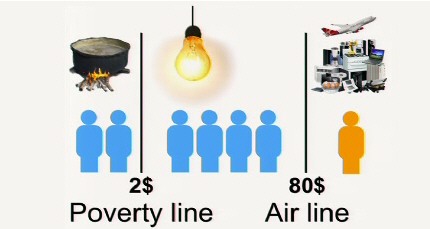
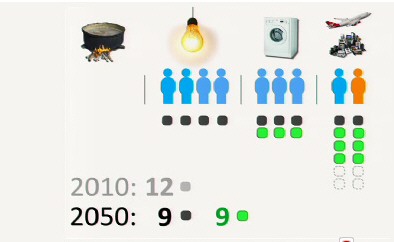
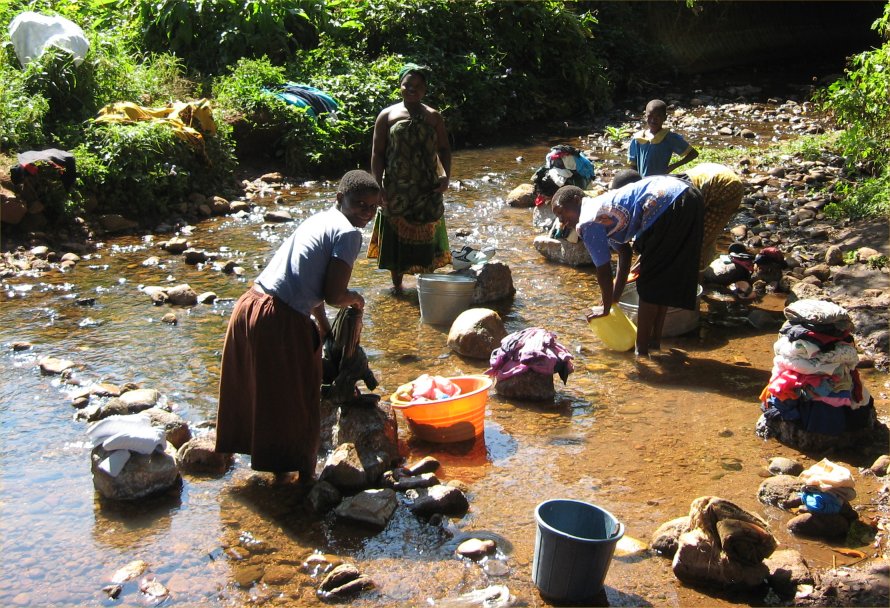
 The early machines in America
The early machines in America